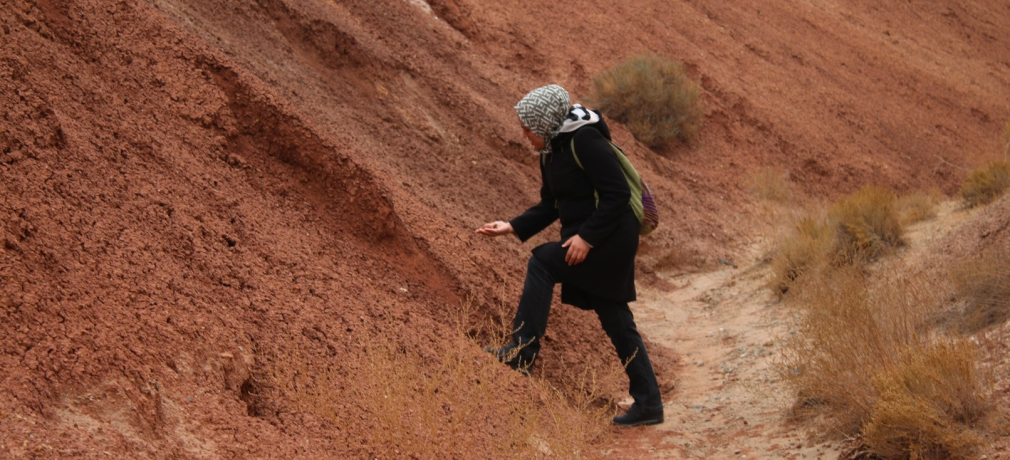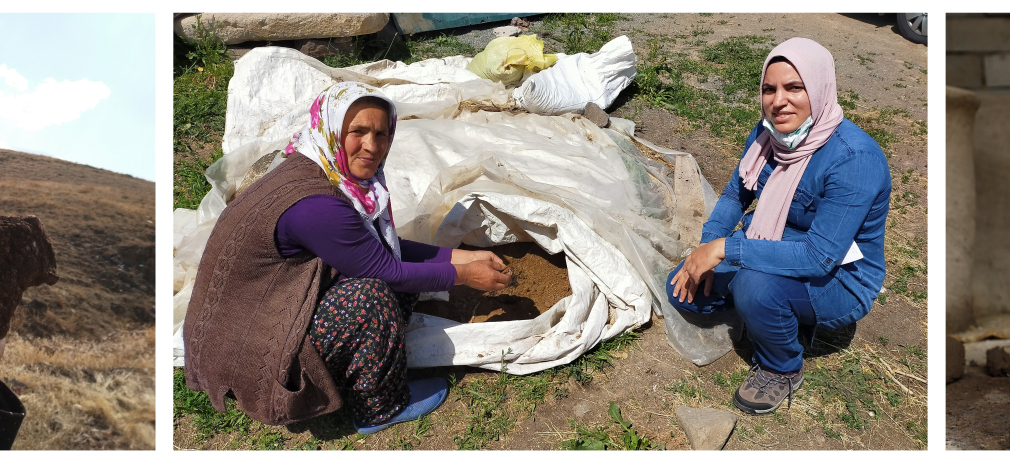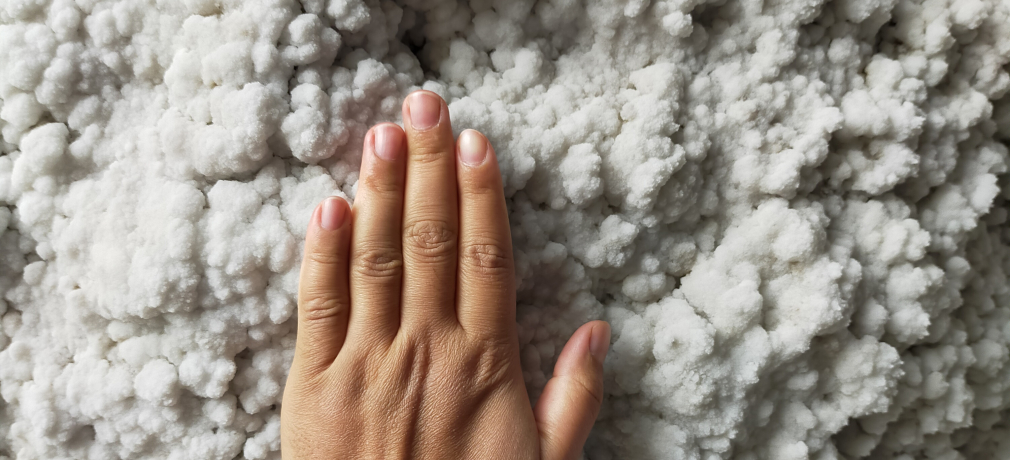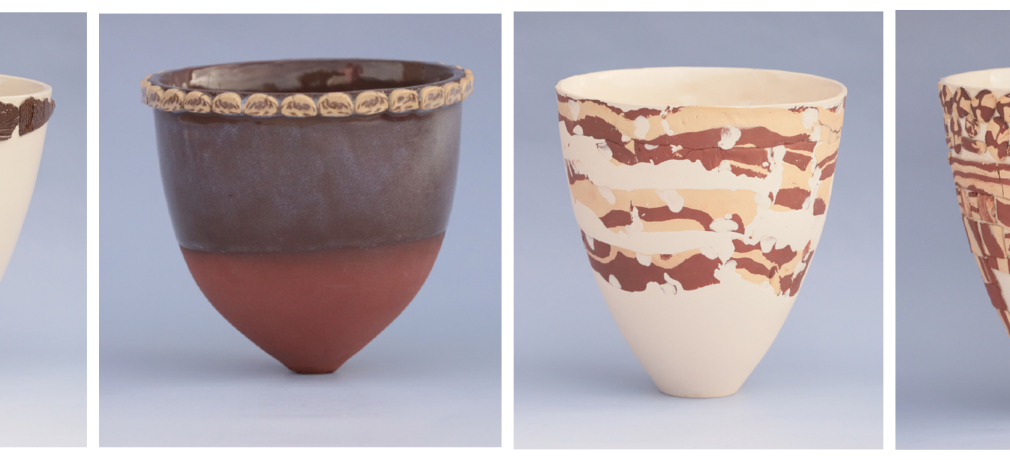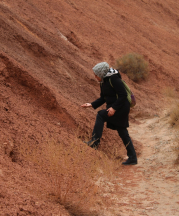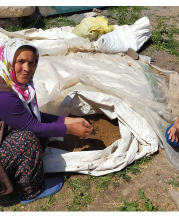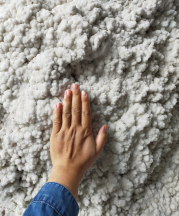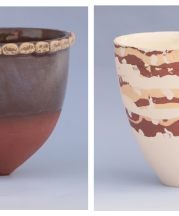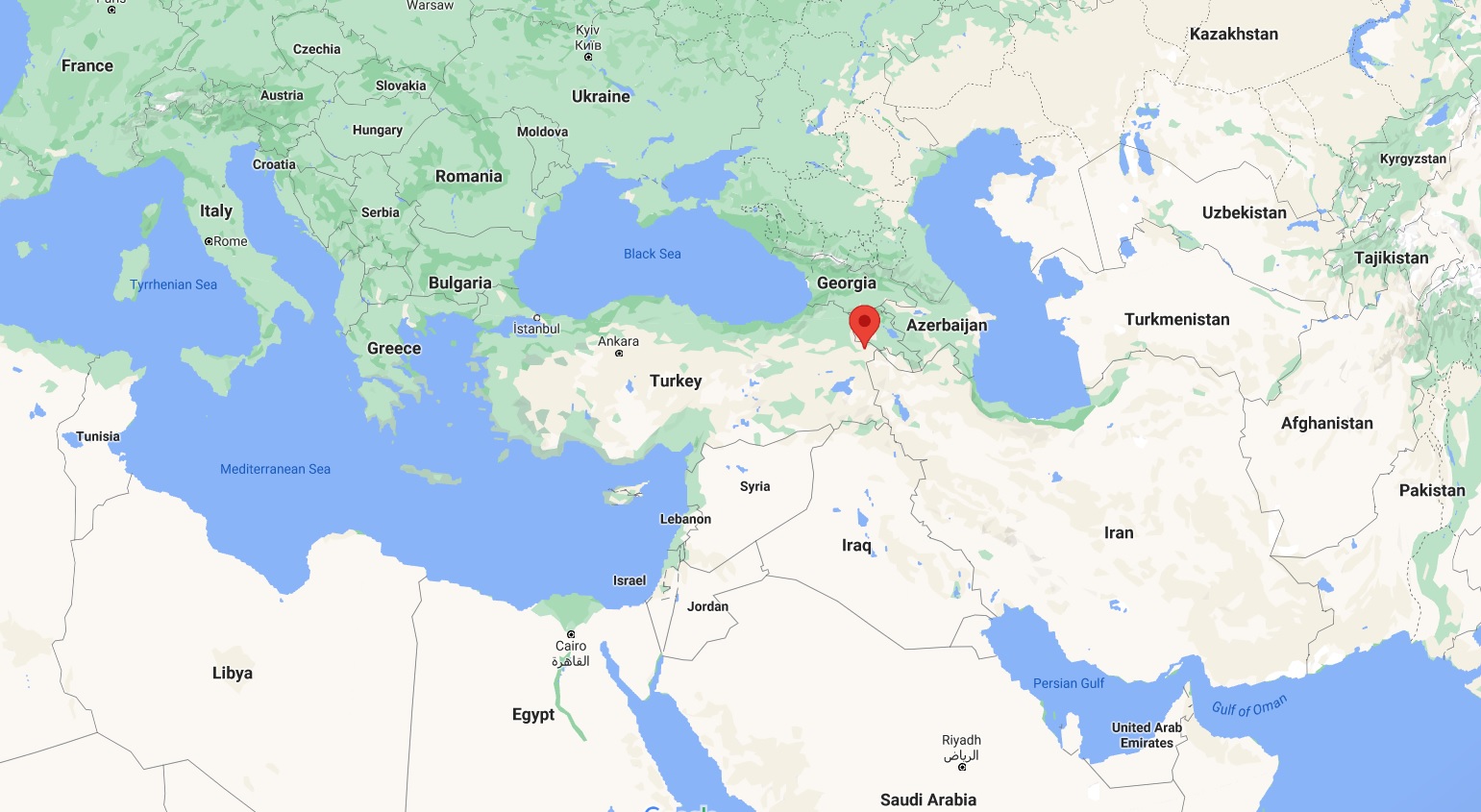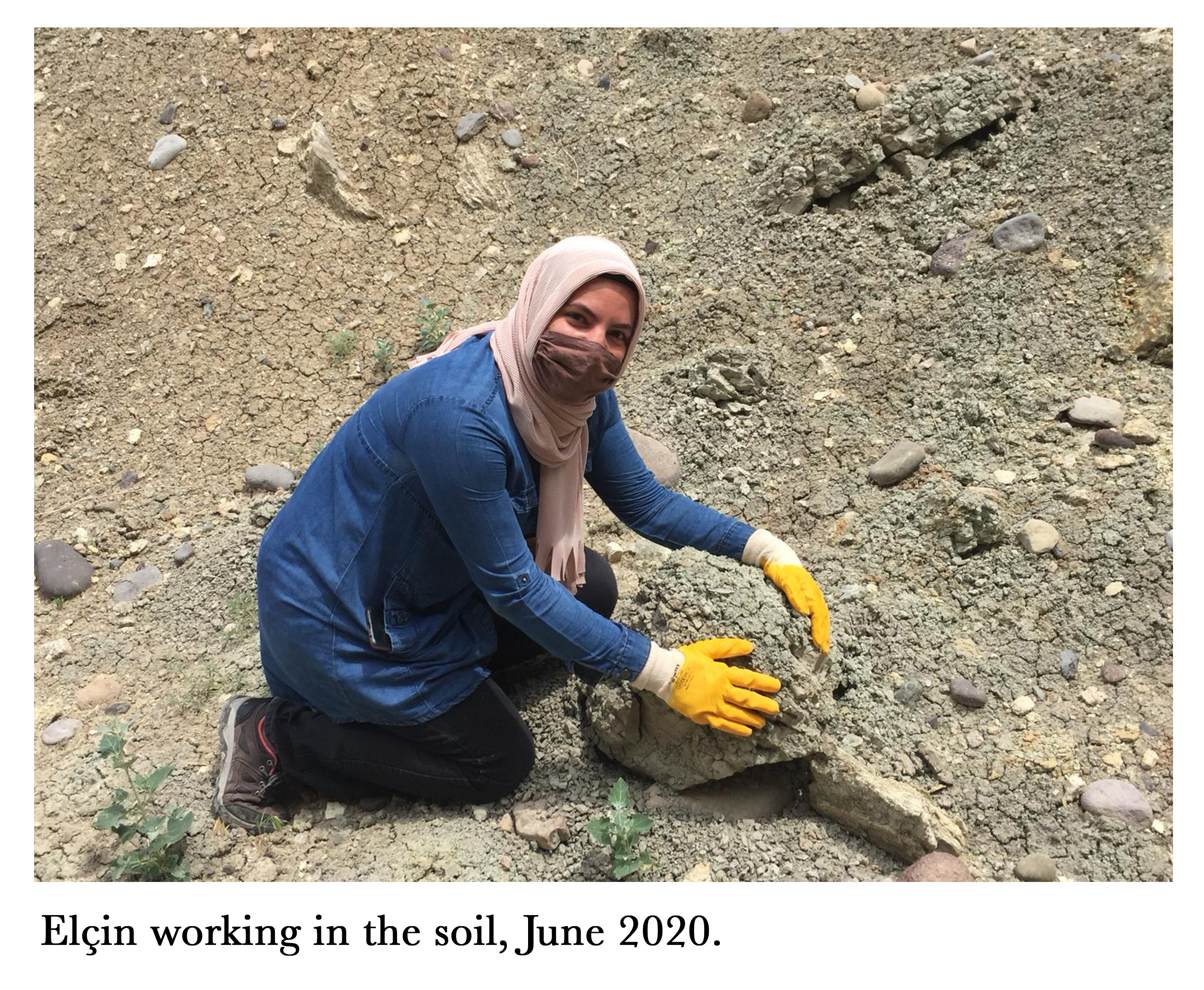 SOIL, LOVE, AND NOT GIVING UP
SOIL, LOVE, AND NOT GIVING UP
It all started in my childhood years…
I loved the earth, its soil, stone, and rock. My mom says, “You used to play with soil when you were a kid.” In my early school days, a ceramics workshop opened on the lower floor of the apartment building where we lived. They were constantly busy with clay and tiles. I enjoyed watching them and knew that later in life, like them, I wanted to shape clay. In high school, priorities changed – I wanted to study literature, however I didn't score high enough for literature on the university exam. Again I encountered ceramics, this time as a course of study. While it had remained on my mind since childhood, pursuing ceramics academically wasn't a familiar path in my environment. It was hard to accept initially, but the more those around me saw my happiness, the more they started to believe in what I do.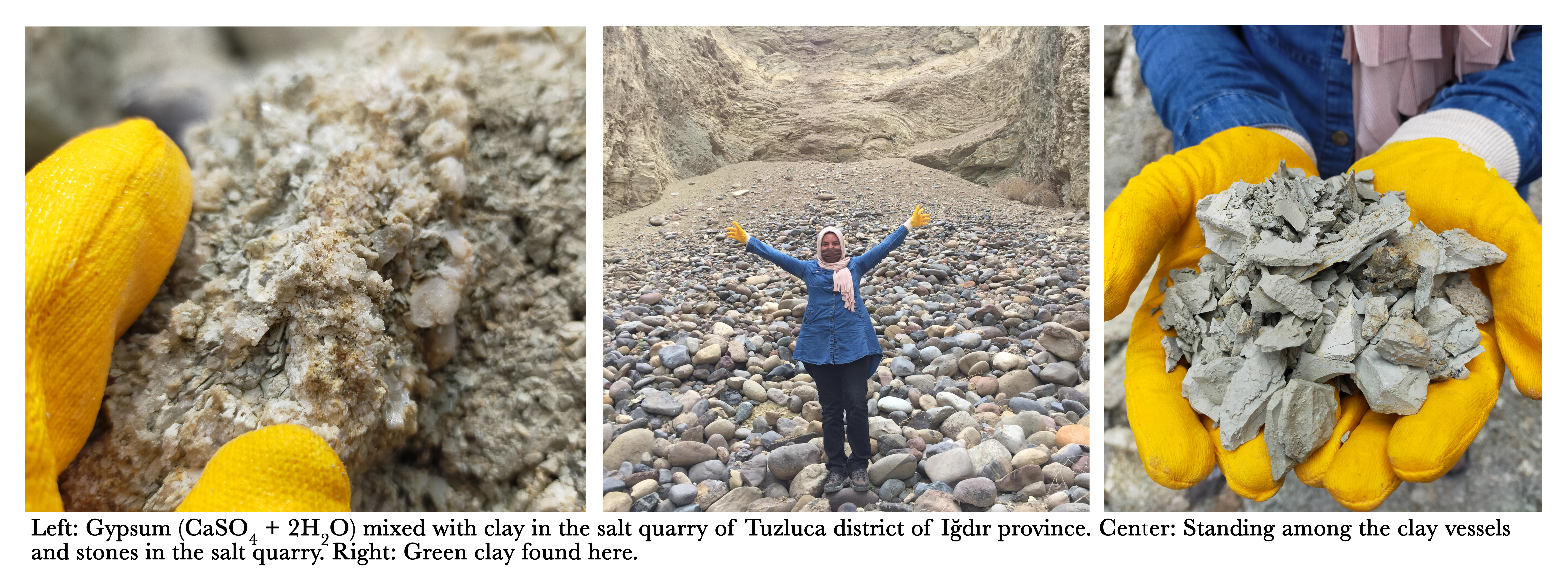
I wanted to be a lecturer. It has been quite a long and difficult journey for me. I earned my bachelor's degree, then my master’s degree, and I'm currently studying for a doctorate. Along the way I have had the opportunity to see many cities and schools. Every instituion and teacher has given meaning to my profession; they have my deepest gratitude. Each one of them is an important part of my ceramics journey. For me, shaping the clay is like going back to childhood – like being a kid again. Sometimes, when I think about my long and difficult journey, I ask myself if I would do it again.
I say yes.
That's why I think I've never given up on it.
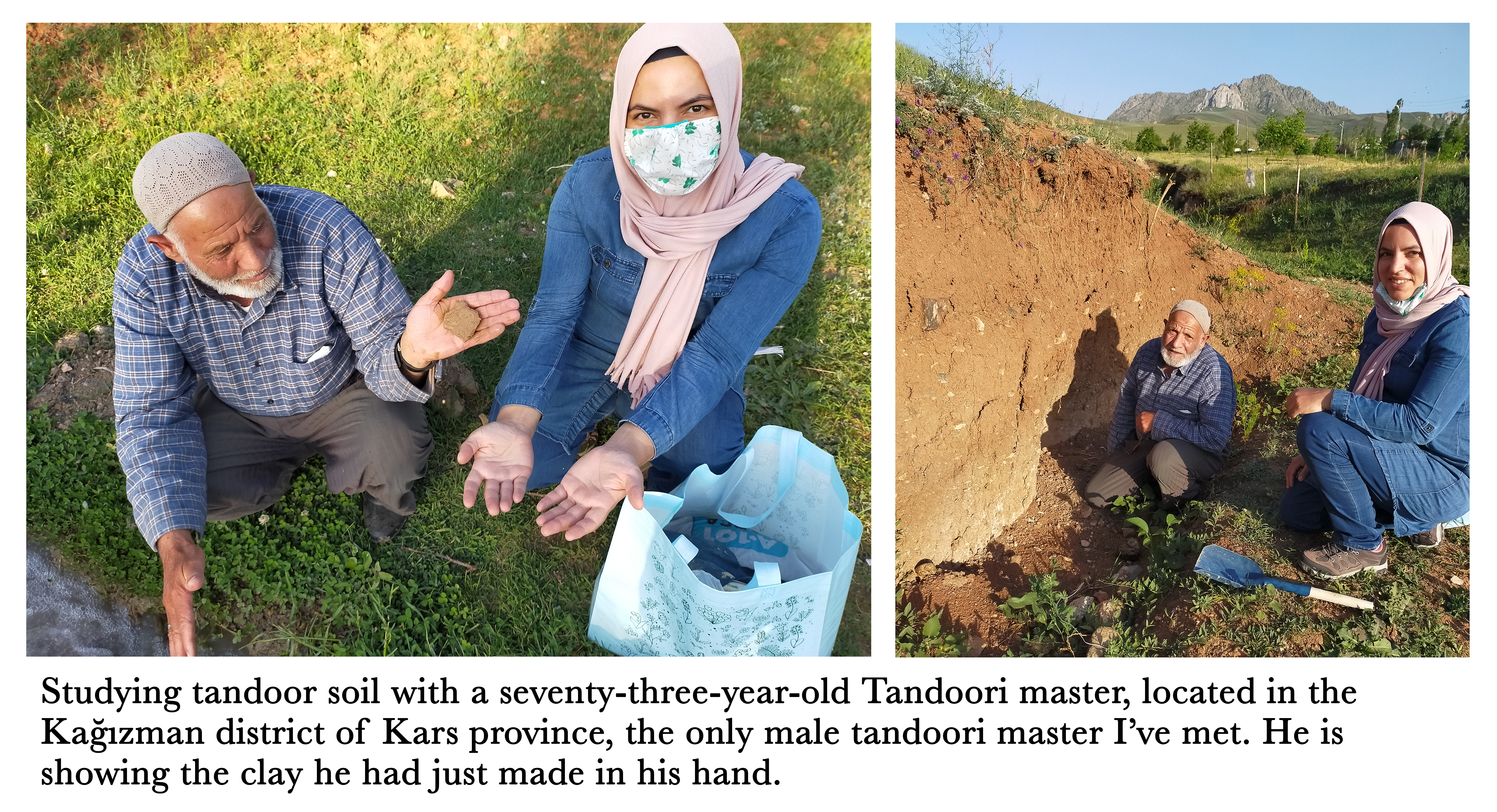
In my pursuit to know all I could about clay, I looked at the effects of adding different materials to clay, presenting my findings in an article called Ceramic Clays Containing Frit, and in my master's thesis, Investigation of the Effects of Iron Compounds on the Structural Properties of Ceramic Casting Clay, Slip and Glaze. I made ceramic vases, dishes, and trays with the clays I developed and held a personal exhibition with these works. I have always cared for being natural – being natural in all aspects of life. Everything that comes from the earth seems natural to me, and I feel I am in my natural state when I am working with the things from the earth.
ELÇIN’S IĞDIR
This journey has led me to a lecturer position in the ceramic and glass design department at Iğdır University. Iğdır is a city at the eastern-most end of Turkey, bordered by three different countries. A large part of my country's highest mountain, Mount Ararat, is located in Iğdır. In Turkish we call it Ağrı Dağı, and the mountain stands at 5,137 meters. It is a volcanic mountain with fertile land around it and can be seen from my school. It is believed that Noah’s Ark landed on Mount Ararat, and, while it may not reach the popularity of Noah’s Ark, another story began around Mount Ararat with my field studies.
I was the first ceramic teacher to come to Iğdır. After the local people saw my interest in clay, especially the natural form of it, they started talking to me about tandoors that have been made in the region since ancient times. A tandoor is a kind of oven that is formed by turning the soil into clay, shaping it, drying, and cooking it. As it is used for cooking, the oven goes through the same stages as traditionally fired ceramics. I was very interested in the topic and the rector, my director, encouraged me to pursue it as part of my research.
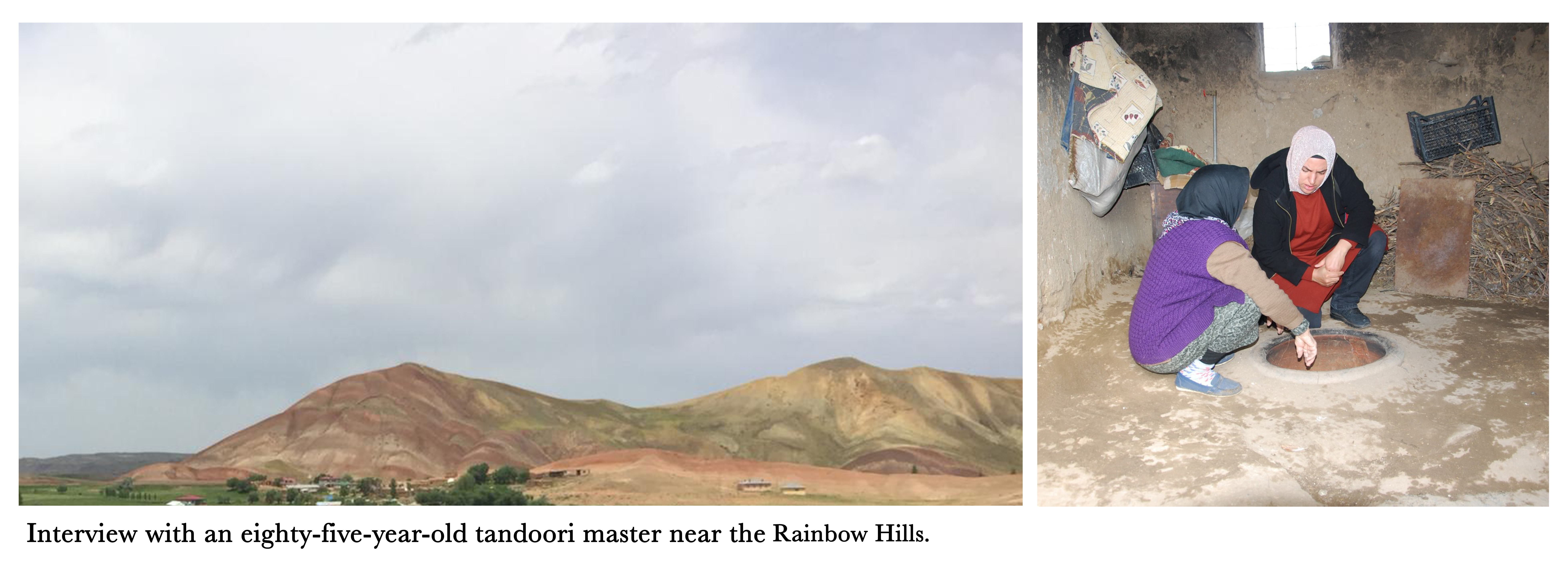
During my initial investigations, I found most people no longer make tandoors; many now buy them from other provinces. The research is turning out to be important to the region, because job opportunities here are limited. I want to help revive the ceramics produced in ancient times and open up new business opportunities for the local people. I want to re-introduce ceramics to the current population by opening voluntary courses in partnership with educational and employment institutions. Iğdır University has already made agreements to this end. The pandemic delayed the opening of the course, but we aim to move forward by mid-May 2021, taking all security measures. In this way, the people will be introduced to a new branch of craft and art with raw materials from their own land.
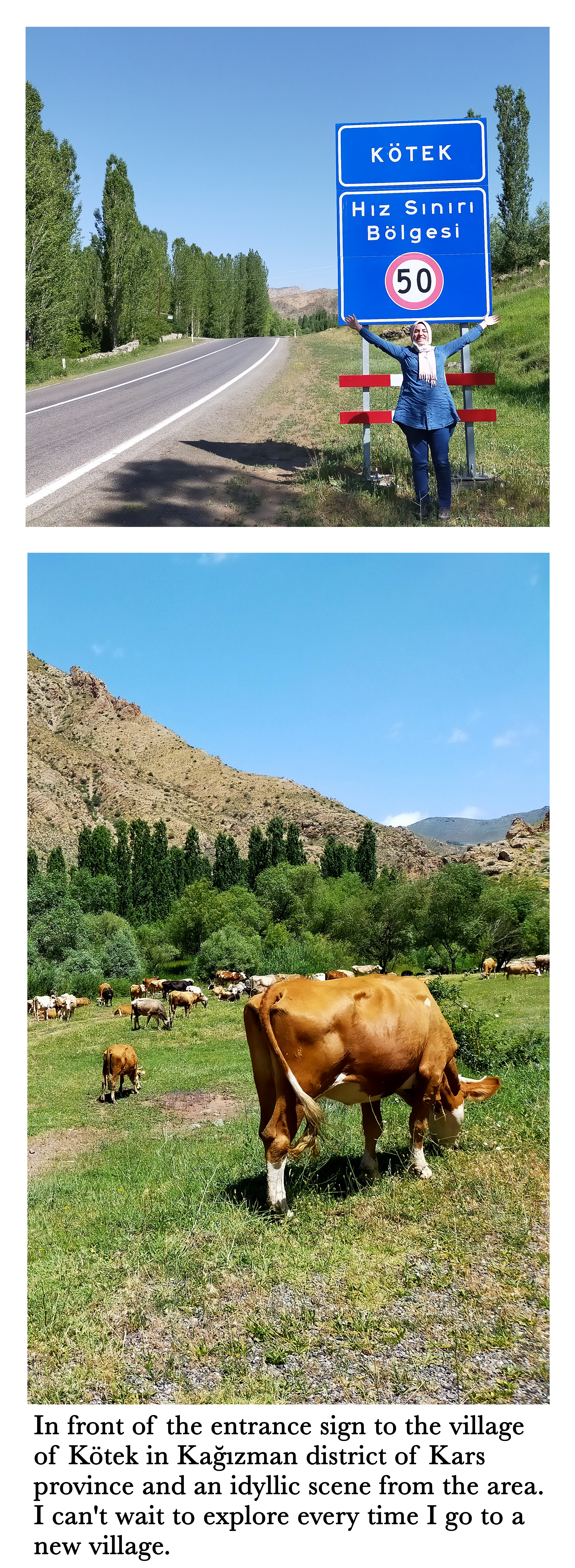
The research is also important research for me, as my area of expertise focuses on the chemical properties of soil. I first started making analyses of samples taken from places local people pointed out. By conducting physical and chemical tests, I look for tandoor clay that is suitable for other ceramics applications too.
Ceramic clay contains raw materials such as aluminum oxide (Al2O3), silicon oxide (SiO2), sodium oxide (Na2O), potassium oxide (K2O), iron oxide (Fe2O3), calcium oxide (CaO), and magnesium oxide (MgO). All of these raw materials showed up in my chemical analysis of tandoor soil. This was a sign that I was on the right track. Throughout my research, even though we were 1500 km apart, my master's thesis teacher supported me with regular consultation and conversation via email and phone calls.
As I worked to establish the first ceramic workshop at Iğdır University, I went to many villages in and around Iğdır to conduct soil investigations. From my first research in the Rainbow Hills of the Tuzluca district (so named for the various colors on display in the strata) I made ceramic clay and fired it at 1,000°C. I also met with the employees of the local brickworks and the tandoor master in the area to learn from their knowledge of the local soil. I presented these studies as a paper at the International Euroasia Congress on Scientific Researches and Recent Trends (2019) in Azerbaijan. Finally, to apply this knowledge, I made ceramic vessels with specific forming methods. Currently, my work continues.
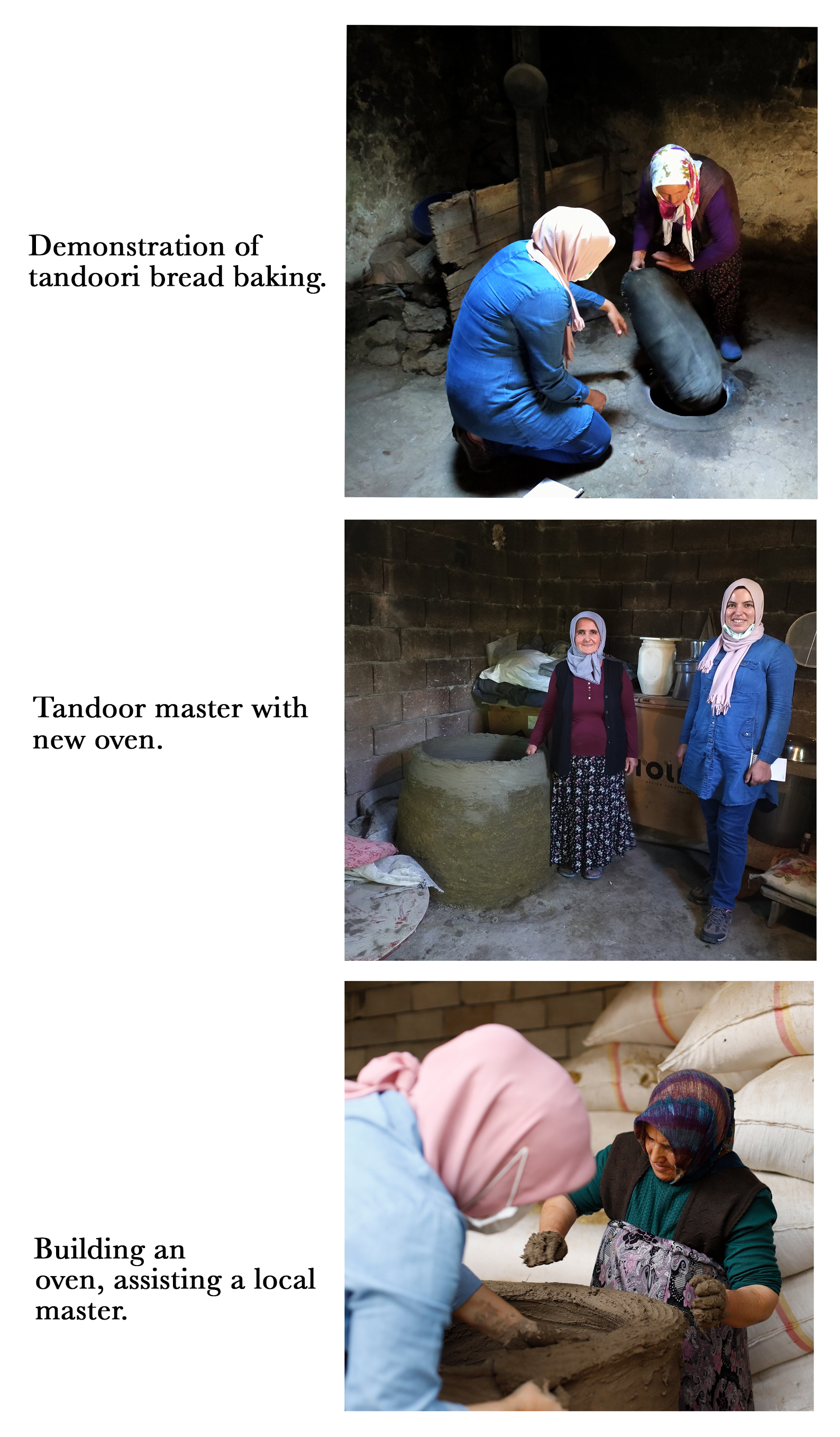
Another notable research site – the villages of the Kars province in the Kağızman district, located about one hundred kilometers from Iğdır. There I met with more tandoor masters, and I was looking for an answer to these questions:
- Did all the craftsmen in the area use the same kind of soil?
- How identical were their chemical compositions?
- How did they use the tandoor?
The collective reply was, “We've been doing this for years, but no one has come and asked yet.”
When I met a ninety-five-year-old tandoor master, she told me about tandoor making and showed me the ceramic pots she made herself, demonstrating how she made them. I was impressed by her work. She was elated I wanted to learn about her craft; she became emotional and cried. Later, she even made me a ceramic cup.
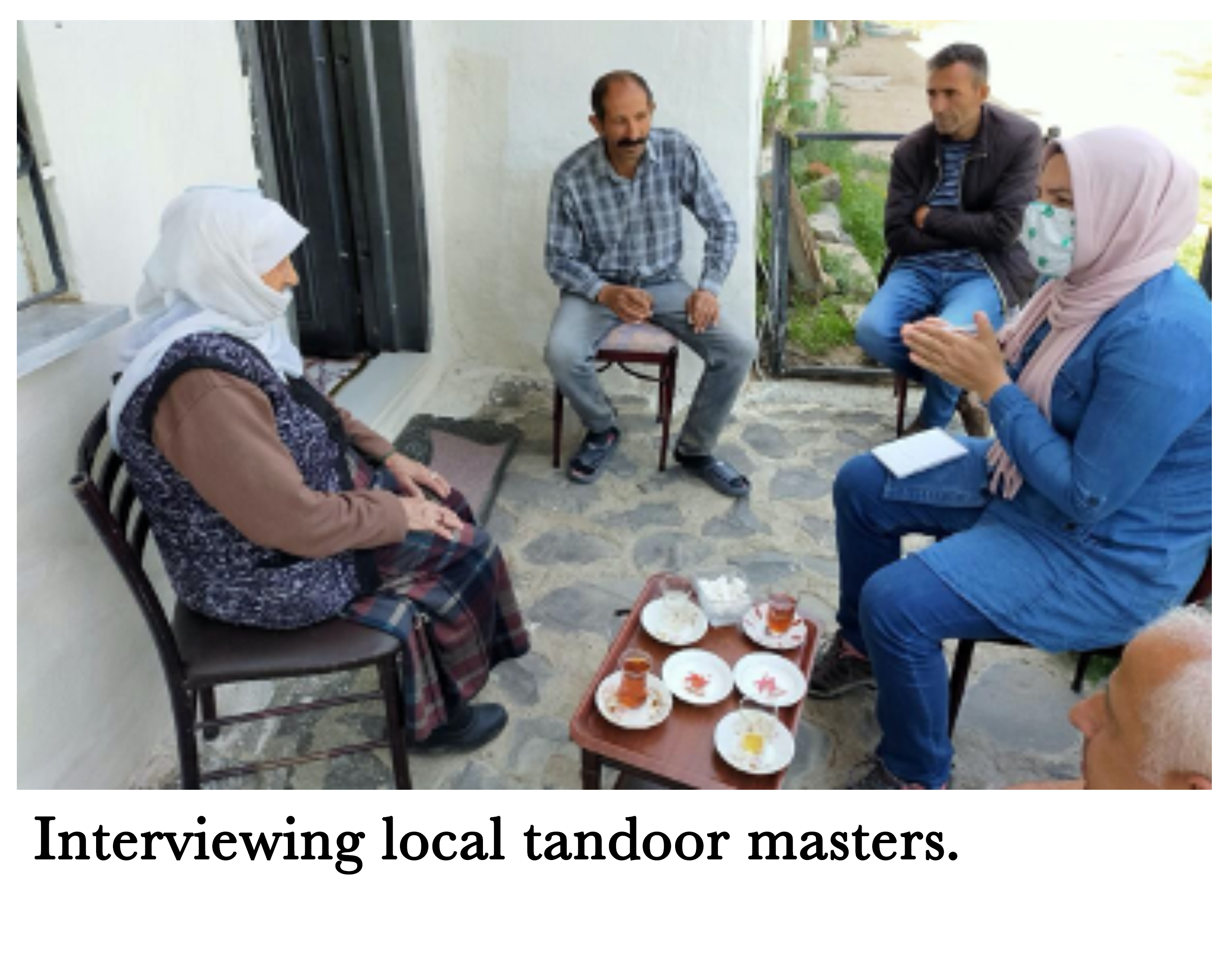
As my work continues I still go to many villages and interview different tandoor masters, studying the tandoors they made. These masters all have unique and innovative ways of working. Some methods include adding hay, sand, or even goat hair to the clay. Their methods and formulas change according to environmental conditions. They try to use what they have and get the best clay, defined as: soil that can be shaped easily when mixed with water.
Chatting with them takes me to another time. It may be an exaggeration, but it's not exactly like I'm on this earth at that moment. In one of my meetings, I helped the tandoor master build the oven and experienced the difficulty of the task. But it was, as always, a pleasure to be covered in clay. I want to do it again.
MY CERAMIC JOURNEY
After we harvest the soil from the terrain it needs to go through many difficult processes, such as: extracting, granulating, soaking, and wedging. My equipment for doing this is limited because my department is relatively new at my university. So I do it with completely primitive methods. Tandoor masters, like me, work with primitive methods. We are similar in this regard. I chose this subject for my doctorate and I am pursuing support from the government for my thesis. I hope this will help me buy new equipment and further fund the project. It is a tiresome process, but the results I get are appreciated; I can say that decreases my fatigue. [Editor's Note: See Elçin's recent exhibition My Ceramics on Mount Ararat.]
Ceramic is a material that is baked after being shaped and dried. So it doesn’t stay “natural.” I've thought about this a lot. I like the raw shape of the soil in nature better than after it has been processed. How could I show it? How can I share this beauty? For this reason, in my recent work, I decided to display the natural state of the soil together with my ceramics. Even before this idea, I had been saving some unprocessed soil or clay to show my students and visitors the raw material in my workshop at the school. I also take photo documentation and, sometimes, actual samples of rock and stone from the terrain to understand the soil’s origin and habitat better.

I've cared about labor all my life and I show my labor through and with soil. It's a beautiful feeling. I even have titled a work I touched the soil!
Touch – not touch as we know it, but touch defined by adding something to soil with my effort, my touch. From this point of view, I have touched the soil of Iğdır.
Thank you for giving me the chance to tell you this in an international journal. I want my passion for the soil to never end. I want to be healthy and see more land, more mountain hills, more stone and rock. I want to touch the clay all the time.
For me, time flows with clay and ceramics in the earth.

 Share
Share
